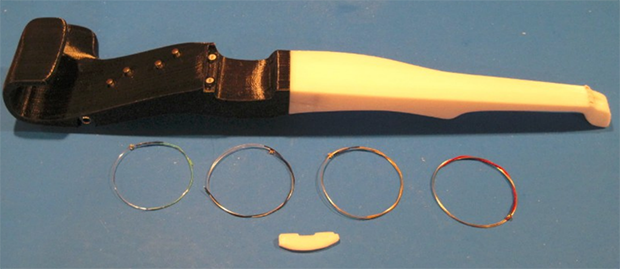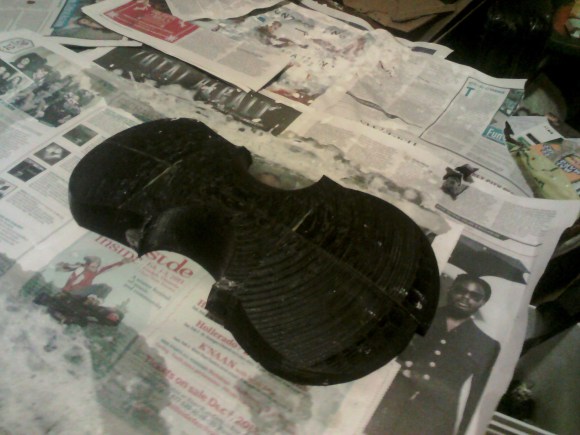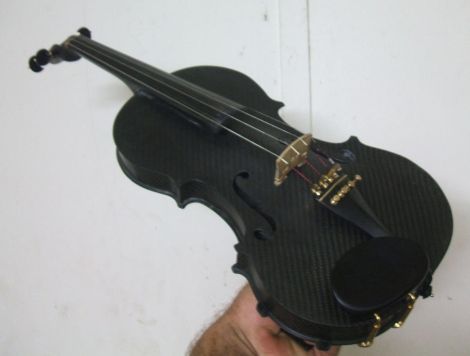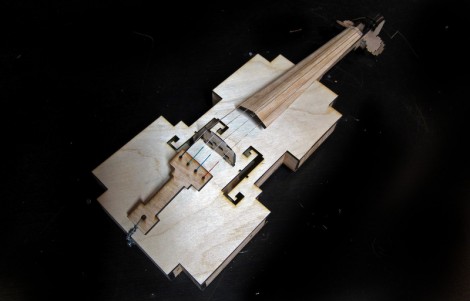
While Thingiverse is filled with Ocarinas, there’s little in the way of printable instruments for more serious musicians. [David Perry] hopes to change this with the F-F-Fiddle, the mostly 3D printed full-size electric violin.
The F-F-Fiddle is an entry for the LulzBot March 3D Printing Challenge to make a functional, 3D printed musical instrument. Already there are a few very, very interesting submissions like this trombone, but [David]’s project is by far the most mechanically complex; unlike the other wind and percussion instruments found in the contest, there are a log of stresses found in a violin, and printing a smooth, curved fingerboard is quite the challenge.
While there are a few non-printed parts, namely the strings, a drill rod used as a truss rod, some awesome looking tuners, and of course the piezo pickups – the majority of this violin, including the bridge, is 3D printed. It’s an amazing piece of work, and after listening to the video (below), sounds pretty good too.
You can grab all the files on Thingiverse and read up on the build at Openfab PDX.













